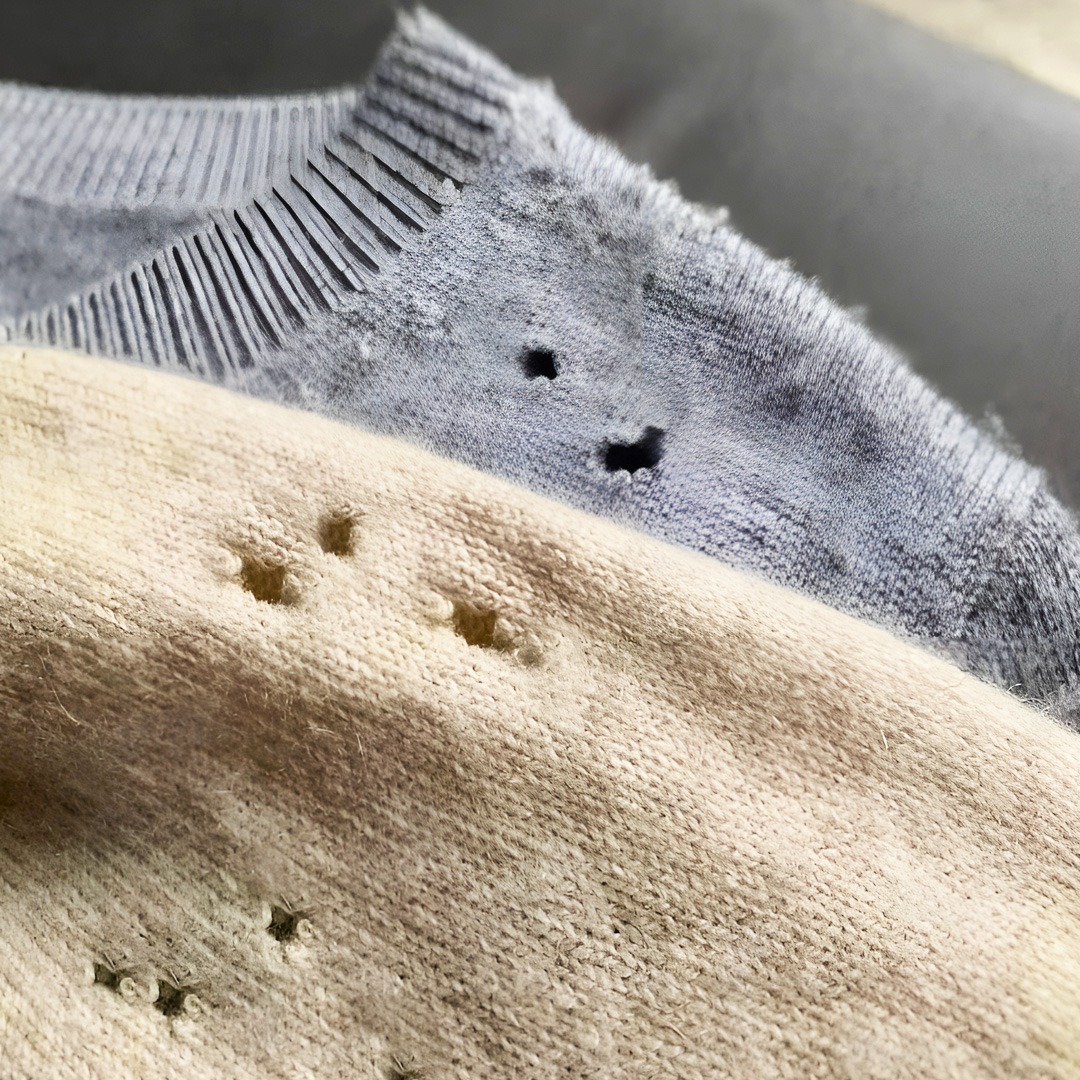ADVERTISEMENT
#### **Why Do Moths Leave Holes in Clothes?**
It is not the adult moths that cause the damage, but rather their larvae. When moths lay their eggs on your clothes, the larvae hatch and begin to feed on the fibers, creating small holes as they chew through the material. The holes left behind are typically small, round, and irregular, with frayed edges around them.
#### **How to Prevent Moths from Damaging Your Clothes**
To protect your clothing from moth infestations, follow these tips:
– **Store clothes properly:** Use airtight containers or garment bags to store clothes, especially if they’re made of wool or other natural fibers. Moths are less likely to be able to access clothes in sealed storage.
– **Regularly clean your clothes:** Moths are attracted to dirty clothes, especially those with body oils or food stains. Wash your clothes regularly and dry them completely before storing them.
– **Use moth repellents:** Natural moth repellents like cedarwood, lavender, and eucalyptus can help deter moths. You can place sachets of dried herbs or essential oils in your closet or drawers to keep moths at bay.
– **Vacuum regularly:** Vacuum your closet, drawers, and carpets regularly, as larvae and eggs can often be found on the floor and in carpets.
—
### **2. The Elusive Threadbare Holes: The Impact of Friction and Wear**
Another common cause of holes in clothes is **friction**. Over time, repeated rubbing against certain areas of your clothing—such as the underarms, the inner thighs, or the sides of your shirts—can weaken the fibers, causing them to break down and eventually form holes. This is particularly true for **lightweight fabrics** or clothes that are frequently washed.
#### **Why Do Threadbare Holes Appear?**
Friction can cause threadbare areas where the fibers of the fabric become weak and begin to disintegrate. When fabrics rub against each other, such as in the case of jeans that rub against your thighs or a shirt that rubs under your arms, it creates friction that causes the threads to fray and become thinner. Eventually, the material will give way and form a hole.
– **High-friction areas**: Common areas prone to wear and tear due to friction include the inner thighs of pants, the elbows, the underarms of shirts, and the sides of socks.
– **Fabric type**: Delicate fabrics like cotton, linen, and thin wool are more prone to wear in these high-friction areas than thicker, more durable fabrics like denim or polyester.
#### **How to Prevent Friction-Induced Holes**
To minimize the risk of threadbare holes caused by friction, consider the following suggestions:
– **Rotate your clothes**: Give your clothes a break by rotating them in your wardrobe. This will prevent overuse of the same items, especially those that experience the most wear.
– **Choose stronger fabrics**: If you often experience wear in certain areas of your clothes, consider purchasing items made from thicker or more durable fabrics.
– **Reinforce high-wear areas**: Consider reinforcing the high-friction areas with patches, fabric reinforcements, or by choosing clothes designed with extra durability in these areas, such as reinforced knees on jeans.
– **Proper fit**: Wearing clothing that fits properly can also help reduce friction, as loose-fitting clothes may cause more rubbing against your skin or other fabrics.
For Complete Cooking STEPS Please Head On Over To Next Page Or Open button (>) and don’t forget to SHARE with your Facebook friends
